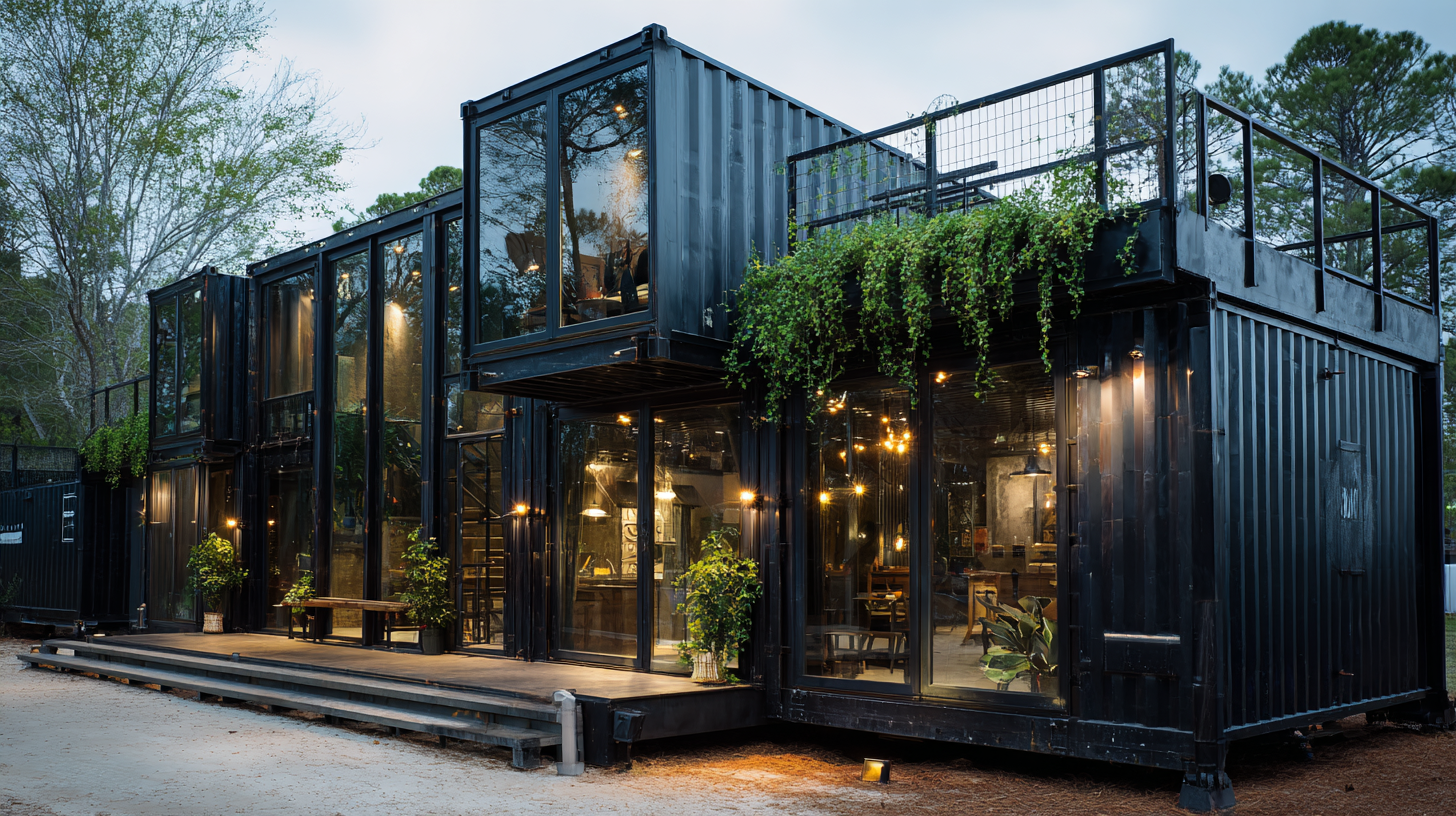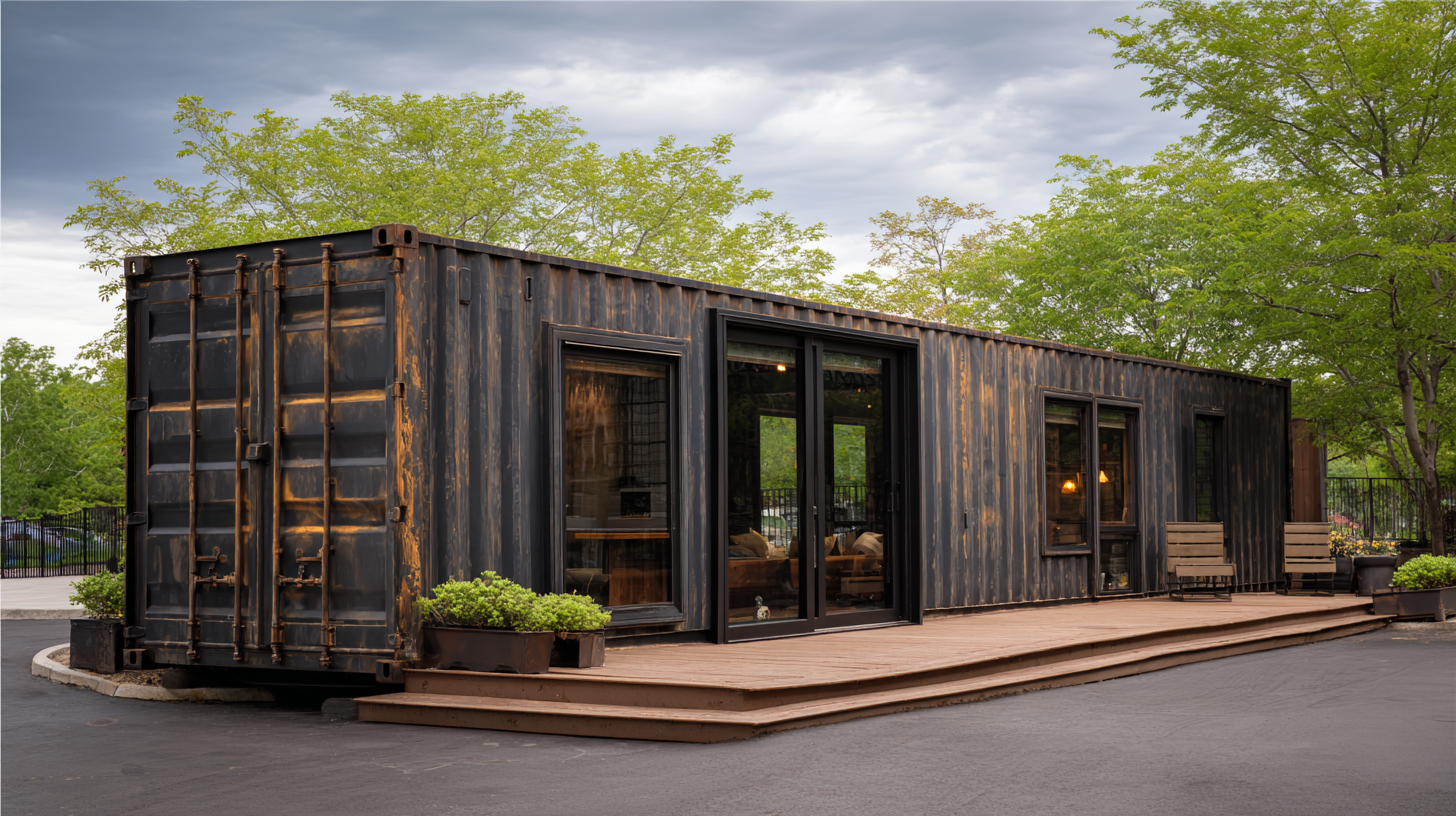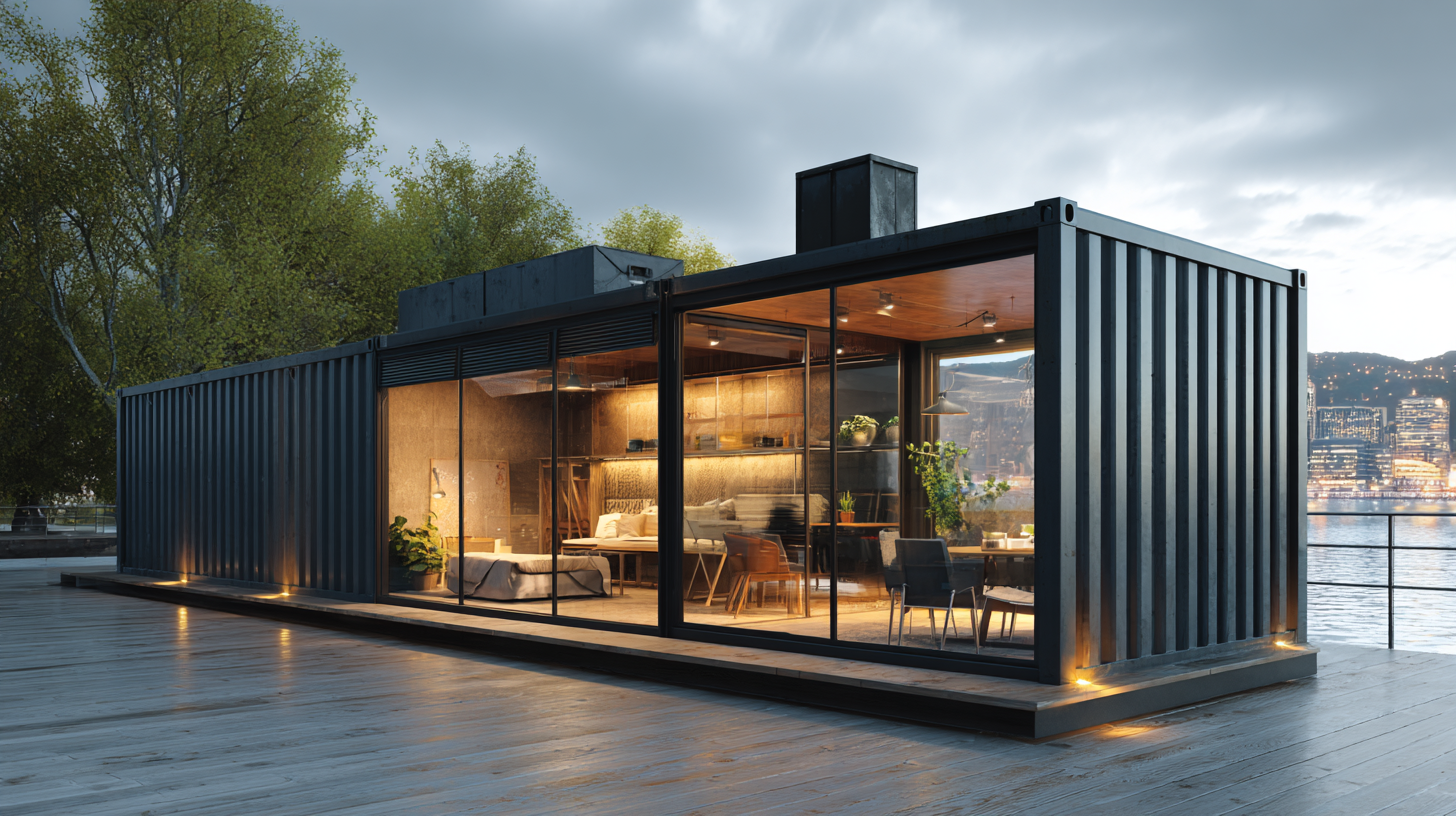Exploring Innovative Uses for Cargo Shipping Containers in Sustainable Living
As urban environments evolve and sustainability becomes a pressing global concern, innovative solutions are required to address the challenges of modern living. One such solution is the creative use of cargo shipping containers, which are redefining the concept of sustainable living. These versatile structures, originally designed for transporting goods across vast distances, are now being repurposed into homes, offices, and community spaces. By leveraging their robust design and affordability, architects and designers are transforming cargo shipping containers into eco-friendly living spaces that prioritize efficiency, minimalism, and environmental responsibility. This exploration of cargo shipping container usages not only showcases their potential in reducing waste and promoting recycling but also emphasizes the need for a shift in our approach to housing and urban development. In this context, we delve into the myriad ways cargo shipping containers are being employed to create innovative, sustainable solutions that meet the demands of today's society.

Designing Eco-Friendly Homes: Transforming Shipping Containers into Sustainable Living Spaces
 Shipping containers, once mere vessels for transporting goods, are now emerging as innovative building blocks for
eco-friendly homes. Their robust structure and modular design provide a unique opportunity to create sustainable living spaces that minimize environmental impact. By repurposing these containers, we can significantly reduce waste while addressing the growing demand for affordable housing. Their availability at a low cost makes them attractive options for eco-conscious homeowners looking to embrace minimalism and sustainable living without sacrificing comfort or style.
Shipping containers, once mere vessels for transporting goods, are now emerging as innovative building blocks for
eco-friendly homes. Their robust structure and modular design provide a unique opportunity to create sustainable living spaces that minimize environmental impact. By repurposing these containers, we can significantly reduce waste while addressing the growing demand for affordable housing. Their availability at a low cost makes them attractive options for eco-conscious homeowners looking to embrace minimalism and sustainable living without sacrificing comfort or style.
Transforming shipping containers into living spaces involves incorporating energy-efficient features and sustainable materials. Homeowners can install solar panels, rainwater harvesting systems, and high-quality insulation to enhance the homes' energy efficiency. These adaptations not only lower utility costs but also promote a lifestyle that harmonizes with the environment. Additionally, the flexibility of container architecture allows for creative designs that maximize natural light and outdoor space, creating a pleasant atmosphere conducive to modern living. This trend is not just about constructing homes; it represents a shift toward embracing sustainability, reducing our carbon footprint, and fostering a renewed respect for our planet.
Creating Modular Urban Farms: Utilizing Cargo Containers for Efficient Food Production
The rise of urban populations has led to significant challenges in food production and sustainability. Utilizing cargo shipping containers as modular urban farms offers an innovative solution to these issues. These containers can be retrofitted with hydroponic or aquaponic systems, allowing for efficient food production in compact spaces. By transforming idle containers into productive farms, cities can enhance local food availability while minimizing the carbon footprint associated with traditional agriculture.

Moreover, cargo containers are inherently transportable and resilient, making them ideal for urban environments. Communities can deploy these modular farms in vacant lots, rooftops, or even parks, fostering local engagement and education about sustainable practices. This decentralized approach not only provides fresh produce but also enhances urban biodiversity and green space. With the potential to produce food year-round, these container farms can significantly contribute to food security while promoting a circular economy model—reusing materials that would otherwise become waste.
Innovative Community Spaces: How Shipping Containers Can Foster Local Collaboration and Events
The innovative repurposing of shipping containers is rapidly gaining traction as a sustainable approach to creating community spaces. According to a report by the Urban Land Institute, the use of modular structures, such as shipping containers, can reduce construction costs by up to 40% compared to traditional building methods. This cost-effectiveness allows local governments and organizations to allocate more resources towards community engagement and programming, ultimately fostering a culture of collaboration and creativity.
Shipping container community spaces serve as multifunctional hubs where residents can gather for events, workshops, or markets. According to the American Institute of Architects, these spaces not only enhance social interaction but also promote local businesses. For instance, the recycling of old shipping containers can provide affordable locations for entrepreneurs to launch pop-up shops or food stalls, helping to invigorate local economies.
Furthermore, studies show that neighborhoods with vibrant community spaces witness a 25% increase in social cohesion, as they encourage participation and foster a sense of belonging among residents. By transforming these humble containers into lively venues, communities can drive sustainability while boosting collaboration and connection.
Sustainable Off-Grid Solutions: Powering Container Homes with Renewable Energy Sources
The integration of renewable energy sources into cargo shipping container homes represents a significant step towards sustainable living. By utilizing solar panels, wind turbines, and rainwater harvesting systems, these innovative structures can operate off-grid, minimizing reliance on conventional power grids. Solar panels installed on the roofs of container homes can capture sunlight and convert it into electricity, catering to all basic needs, from lighting to powering appliances. In areas with consistent wind flow, small wind turbines can further supplement energy, ensuring a steady supply, even during less sunny periods.
Additionally, effective water management systems can be incorporated to enhance sustainability. Collecting rainwater through gutters leads to a reliable water source, which can be filtered for drinking, cooking, and irrigation. This not only conserves precious resources but also reduces the environmental impact associated with traditional water supply systems. By blending modular design with renewable energy technologies, cargo shipping containers are being redefined as eco-friendly living spaces that exemplify innovation in sustainable architecture, proving that homes can be both functional and environmentally responsible.
Exploring Innovative Uses for Cargo Shipping Containers in Sustainable Living - Sustainable Off-Grid Solutions: Powering Container Homes with Renewable Energy Sources
| Feature | Description | Benefits | Renewable Energy Source |
|---|---|---|---|
| Insulation | High-performance insulation materials to enhance energy efficiency. | Reduced energy costs and improved comfort levels. | N/A |
| Solar Panels | Installation of rooftop solar panels for electricity generation. | Energy independence and reduction of carbon footprint. | Solar Energy |
| Rainwater Harvesting | Systems to capture and store rainwater for personal use. | Conserves water resources and reduces utility costs. | N/A |
| Wind Turbines | Small wind turbines for supplemental energy production. | Provides energy during non-solar periods. | Wind Energy |
| Composting Toilets | Eco-friendly toilets that turn waste into compost. | Reduces water usage and promotes soil health. | N/A |
Repurposing for Waste Reduction: Creative Uses of Cargo Containers in Sustainable Projects
Cargo shipping containers are increasingly being repurposed as a creative solution for waste reduction and sustainable living. Municipalities like Viladecans and Torrelles de Llobregat in Catalonia are implementing innovative strategies to minimize plastic waste while exploring new uses for discarded materials. Shipping container homes exemplify this trend, offering sustainable, affordable housing solutions that align with eco-friendly designs. According to recent studies, constructing with repurposed shipping containers can reduce construction waste by as much as 80%, showcasing their potential in sustainable urban development.
In addition to housing, cargo containers are being utilized for community gardens, pop-up shops, and waste management facilities. These projects not only contribute to waste reduction but also promote a circular economy by giving new life to items that would otherwise contribute to landfill waste. Research indicates that effective waste management practices in construction can lead to the recovery of up to 90% of the materials through creative reuse. The movement towards repurposing shipping containers is, therefore, not only a response to the waste crisis but also a vital step toward sustainable living practices across diverse sectors.
Innovative Uses of Cargo Shipping Containers in Sustainable Living
Get a quote
Get a quote
Read More
Accept AllReject AllCustomise
Privacy Overview
| Cookie | Duration | Description |
|---|---|---|
| cookielawinfo-checkbox-advertisement | 1 year | Set by the GDPR Cookie Consent plugin, this cookie records the user consent for the cookies in the "Advertisement" category. |
| cookielawinfo-checkbox-analytics | 11 months | This cookie is set by GDPR Cookie Consent plugin. The cookie is used to store the user consent for the cookies in the category "Analytics". |
| cookielawinfo-checkbox-functional | 11 months | The cookie is set by GDPR cookie consent to record the user consent for the cookies in the category "Functional". |
| cookielawinfo-checkbox-necessary | 11 months | This cookie is set by GDPR Cookie Consent plugin. The cookies is used to store the user consent for the cookies in the category "Necessary". |
| cookielawinfo-checkbox-others | 11 months | This cookie is set by GDPR Cookie Consent plugin. The cookie is used to store the user consent for the cookies in the category "Other. |
| cookielawinfo-checkbox-performance | 11 months | This cookie is set by GDPR Cookie Consent plugin. The cookie is used to store the user consent for the cookies in the category "Performance". |
| CookieLawInfoConsent | 1 year | CookieYes sets this cookie to record the default button state of the corresponding category and the status of CCPA. It works only in coordination with the primary cookie. |
| viewed_cookie_policy | 11 months | The cookie is set by the GDPR Cookie Consent plugin and is used to store whether or not user has consented to the use of cookies. It does not store any personal data. |
| Cookie | Duration | Description |
|---|---|---|
| _cs_c | 1 year 1 month | The cookie is used by Content Square to save the user consent to be tracked. |
| Cookie | Duration | Description |
|---|---|---|
| _cs_id | 1 year 17 days 20 hours 13 minutes | This cookie is used to store the ContentSquare's user identifier ID. This is a persistent cookie and expires after 13 months. |
| _cs_s | 1 hour | This cookie is used to store the number of page's viewed by a visitor within the session for ContentSquare's solution. |
| _ga | 1 year 1 month 4 days | Google Analytics sets this cookie to calculate visitor, session and campaign data and track site usage for the site's analytics report. The cookie stores information anonymously and assigns a randomly generated number to recognise unique visitors. |
| _ga_* | 1 year 1 month 4 days | Google Analytics sets this cookie to store and count page views. |
| _gcl_au | 3 months | Google Tag Manager sets the cookie to experiment advertisement efficiency of websites using their services. |
| Cookie | Duration | Description |
|---|---|---|
| test_cookie | 15 minutes | doubleclick.net sets this cookie to determine if the user's browser supports cookies. |
| Cookie | Duration | Description |
|---|---|---|
| _cs_root-domain | session | Description is currently not available. |
| _cs_same_site | session | Description is currently not available. |